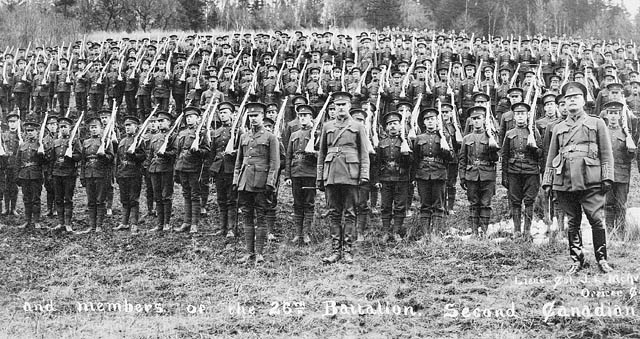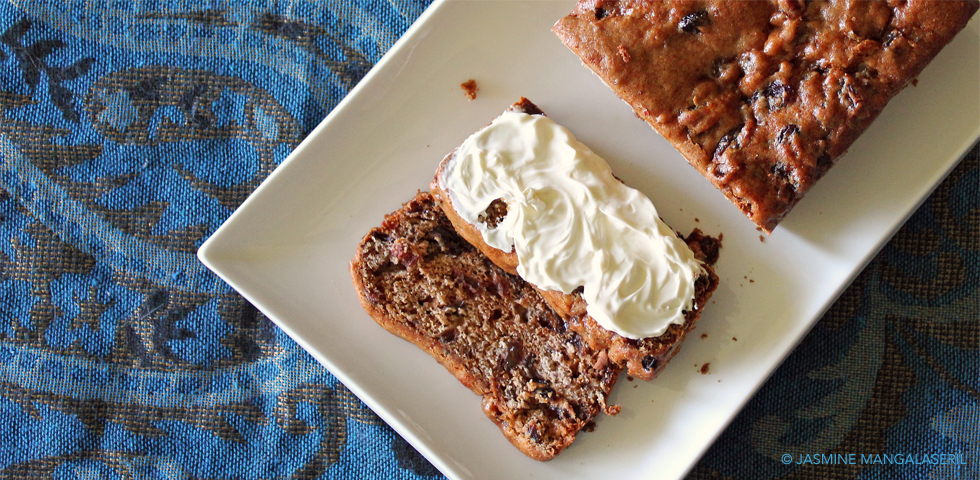
St Julien Day
22 April 1915 marked the first time a large quantity of deadly gas was deployed in battle. On that date, the Germans unleashed 160 tons of asphyxiating gas on Allied soldiers at Ypres. The unsuspecting men were not equipped to handle the yellow-green chlorine cloud that smelled of pineapples and pepper. Some held their positions while they fought to see and breathe. Some died. Some ran, their eyes and lungs in searing pain.
That night, Canadian troops endeavoured to close the 6.5km (4mi) gap in the Allied line—this was the Dominion’s first European battle.
In the following days, equipped with their shoddy Ross Rifles and sodden handkerchiefs used as makeshift gas masks, the Canadians endured violent rounds of German machine gun fire, shrapnel, and more suffocating gas. With more than 6000 casualties (approximately one in three Canadian fighters)—2000 of whom would die—the Dominion became known for fighting ferociously. A German prisoner told his Canadian guard, “You fellows fight like Hell.”
When Ottawa marked this milestone’s first anniversary, Sir Wilfrid Laurier said, “Let the banner rise, let it float at the top of ever mast, at the top of every steeple, throughout the length and breadth of this land, there to be looked with pride by ever Canadian, with the knowledge that it is supremely the banner of freedom, of justice and of power.”
The young ladies of Berlin want you
The embarrassing results of the “700 Men in Three Weeks” campaign forced a last-ditch effort to bring the 118th Battalion up to strength. Instead of soldiers prowling the streets for fit young men, more than 200 women organized and led the charge in a new campaign, scheduled to begin on 1 May. “…judging by the enthusiasm, the fair recruiters are already displaying, slackers will have one big warm time ahead of them.”
At 1/5 of a penny, tea was still the cheapest hot drink
Russia and France drank more Rosy Lee at home (the nations banned vodka and exiled the la fée verte (respectively)), and took up serving builder’s brew on the battlefield. Meanwhile, shipping and insurance rates trebled because the Germans had already torpedoed merchant vessels carrying almost 8.2 million kilos (18 million pounds) of tea. Here at home, shoppers faced ballooning prices and paid 50-70¢ per pound (approximately $10-14–see notes on conversion), plus new and increased war taxes. Sensitive to growing consumer fatigue and the need to economise, one merchant argued tea’s budget-friendly nature: five cups could be brewed for a penny.
Electric cookers and radiators: the way of the future
With cheap, reliable, and plentiful power, inventors looked to harness electricity for more than lamps and bits of machinery. Many people thought “the day will come when homes will be heated by electric radiators, and the housewife will do her cooking and baking on electric ranges.” Coal furnaces warmed homes and coal-, oil-, wood- or gas-powered stoves cooked meals. While some American communities already used electric radiators and ranges, the inventions hadn’t yet migrated here. Electric stoves promised push-button convenience and reliability; electric heat cooed cleanliness. “The public looks forward to the day when it can escape the heavy extraction of coal barons.” Everything people hated about coal could also be a thing of the past: filling coal bins, coaxing fires in the middle of winter, and dealing with all those ashes that filtered through floorboards and destroyed carpets.
Licking their wounds
The pro-name changers probably took the interval between their day at Queen’s Park and Berlin’s next council meeting to regroup. The Special Act allowed council to change the city’s name, but it also required what the Board of Traders and other name changers didn’t want: a public vote to permit council to rename the city.
Like those chastised for traipsing down the morally dubious path and then dragged into being fair and forthright, the pro-name change coterie tried to deflect weeks’ worth of sentiment and words to be seen wending up the high road.
If they wanted a public vote, they could have asked us
The gallery was packed to the rafters as council discussed next steps. The city fathers were unanimous in supporting a public vote, but they were split on when it should occur. The impatient Board of Traders wanted it done in the next few weeks while others on council argued for a cooling-off period by including the question with the 1 January votes.
After Alderman Hahn reviewed the referendum’s procedures, he hinted the actions were the right thing to do. He decried the counter-petitioners for going directly to the Legislature and bypassing council. Alderman Cleghorn piled on and added the opposition weren’t “men enough to submit their petition to council…” Alderman Rudell later added, “Why should we pay attention to the voice of opposition?…We were never afraid of submitting this…”
Alderman Gallagher seemed to be the most vocal of the non-Board of Traders. He disapproved of how loyalty and patriotism cloaked politics and commercialism. While Cleghorn’s team believed the public would support the change, Gallagher’s informant said it would fail 8:1 if the vote should happen in the next few months. His source added, “I hope they will submit it just to show you where you get off at.”
As the aldermen debated timing, Cleghorn’s masque slipped and displayed his true colours. His side didn’t want a public vote, but now the Legislature mandated it. “What more do you want?” he huffed.
After some more backing and forthing, council decided Berliners (those who were British subjects and qualified to vote at municipal elections) would hit the ballot boxes on 19 May. The question was simple: “Are you in favour of changing the name of the city?”
Notes
- For more information about the Battles of St Julien and Kitchener’s Wood, read the Calgary Highlanders’ page.
- For a first-hand account of the gas attack, read Anthony R. Hossack’s (Queen Victoria Rifles) account.
Want a bit more information?
- About the Kitchener 1916 Project
- Bank of Canada’s Inflation Calculator was used to calculate modern price equivalents (2016)
The Recipe

In 1916, Grace Clergue Harrison and Gertrude Clergue compiled a cookbook of Allied nations’ recipes. It was a fundraiser “to aid the war sufferers in the devastated districts of France.” The region was one of France’s most fertile areas, but was “left desolate, with all buildings destroyed and all farming implements, cattle, and farm products taken off by the invaders for military uses.” From what I gather, as people heard of the project, they sent in recipes—Stephen Leacock‘s introduction mentions submitting 50 recipes (none of which were included).
To mark St Julien Day, I chose the Canadian War Cake. It’s a boiled raisin cake (also known as a “Depression cake”), made by boiling the raisins with sugar and spices and fat (if used). This sort of cake was meant for those who were economising for the war effort (or later, during the Depression)—it used very little fat, no eggs and no dairy.
The cake (as written) is sweeter than I’d like, but has a lovely molasses-y, ginger-less gingerbread cake flavour. As there is so little fat, it’s better to grease and flour the pan (or use greased parchment) than to use a regular paper liner.
Canadian War Cake (Allied Cookery: French, Italian, Belgian, Russian, arranged by Grace Clergue Harrison and Gertrude Clergue (1916))
Two cups brown sugar, 2 cups hot water, 2 tablespoons lard, 1 lb. raisins, cut once, 1 teaspoon salt, 1 teaspoon cinnamon, 1 teaspoon cloves.
Boil these ingredients 5 minutes after they begin to bubble. When cold add 1 teaspoon soda dissolved in 1 teaspoon hot water, and 3 cups of flour.
Bake in 2 loaves, 45 minutes in a slow oven.
Canadian War Cake (Adapted; Modern Equivalent)
Yield: 1 loaf
| 200g | 250ml | 1 Cup | Brown sugar (see notes) |
| 235ml | 235ml | 1 Cup less 1 Tablespoon | Hot water |
| 15g | 15ml | 1 Tablespoon | Lard (see notes) |
| 225g | 150ml | 1-½ Cups | Sultanas, roughly chopped (about ½ lb) (see notes) |
| 2ml | 2ml | ½ Teaspoon (scant) | Salt |
| 2ml | 2ml | ½ Teaspoon (scant) | Cinnamon |
| 2ml | 2ml | ½ Teaspoon (scant) | Ground cloves |
| 170g | 280ml | 1 Cup + 2 Tablespoons | All-purpose Flour |
| 2.5ml | 2.5ml | ½ Teaspoon | Boiling water |
| 2.5ml | 2.5ml | ½ Teaspoon | Bicarb (baking soda) |
Add the sugar, hot water, lard, fruit, salt, and spices to a pot and bring to a rolling boil. Keep it there for five minutes, stirring occasionally. Remove from the heat and let cool for about 10 minutes, stirring every once in a while to let the steam escape.
Heat the oven to 170C/325F. Butter and flour a 20cm x 10cm (8”x4”/1L) or 21cm x 11cm (8-½” x 4-½”/1.2L) loaf pan.
Stir in the flour until it is incorporated.
Mix the bicarb with the boiling water—it will fizz and quickly stir into the batter. Decant into the prepared baking tin. Smooth the top and bake for 45-60 minutes, or until an inserted skewer comes away cleanly.
Notes
- Use either dark or brown sugar, knowing that the darker the sugar, the more pronounced the molasses flavour will be
- I found this cake cloying as written, so in my second go, I decreased the sugar to 150g/ ¾ cup. It was still sweet, but more palatable and less headache-inducing.
- If you don’t use lard, use butter
- Use whatever raisins you have or measure out the same amount of currants (which would save you the chopping)
